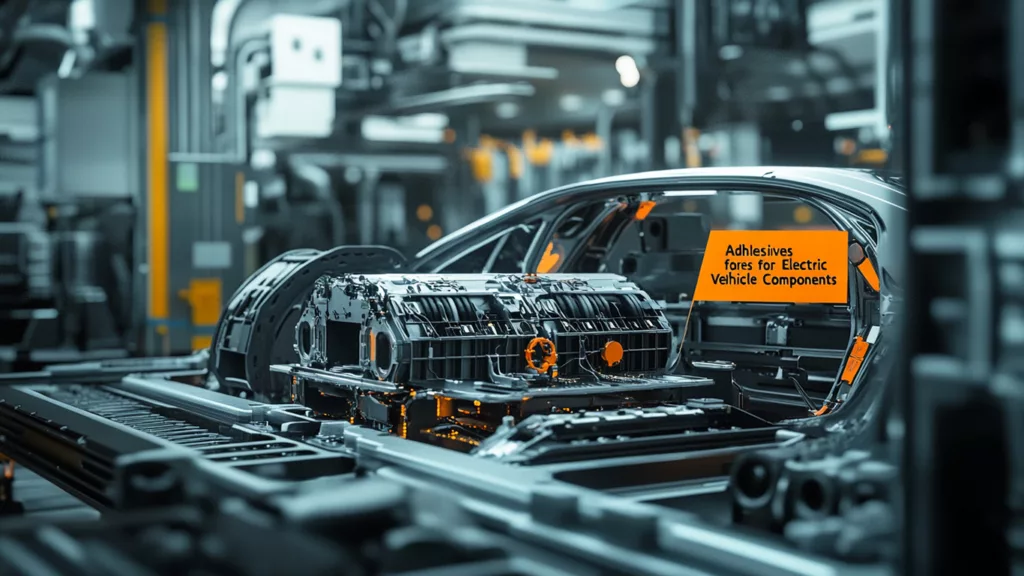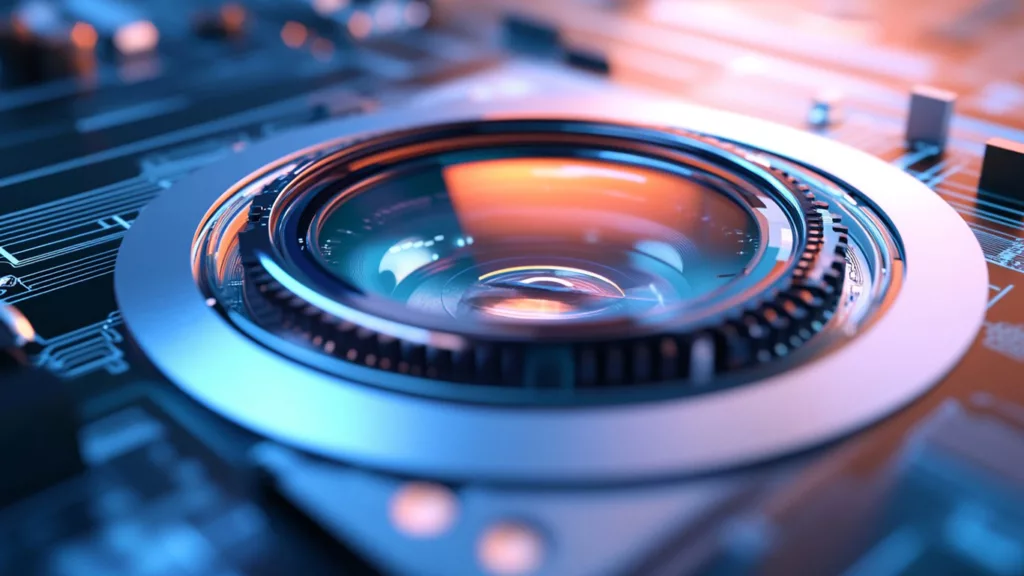Selecting the correct potting material for printed circuit boards (PCBs) is crucial to ensuring the durability, functionality, and safety of electronic devices. Potting materials protect sensitive components from environmental damage, thermal stress, and electrical interference, making them an integral part of electronic manufacturing. In this guide, we’ll explore the key factors to consider, types of potting materials, and tips for making the best choice.
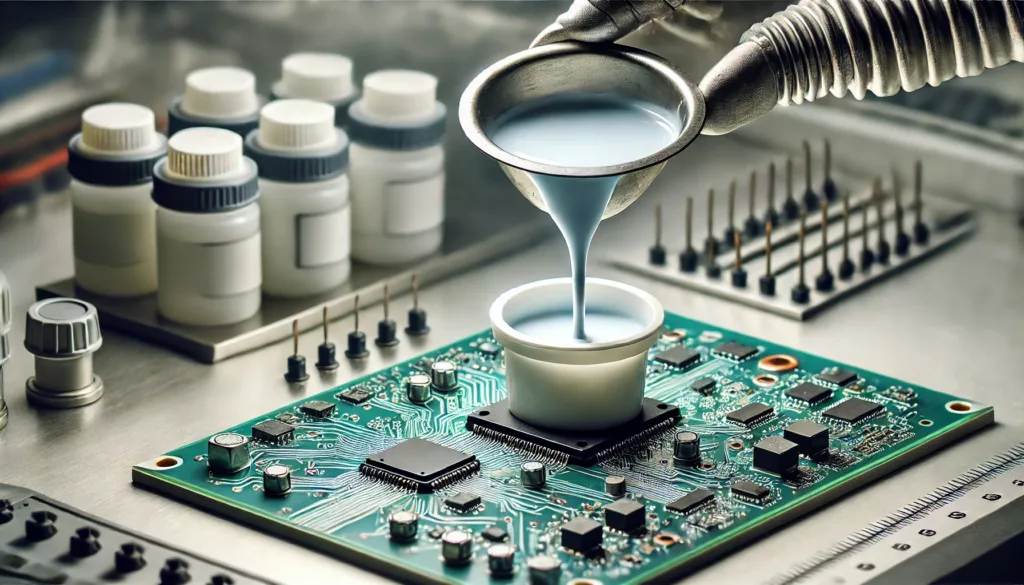
What is Potting Material for PCBs?
Potting material refers to a protective compound applied to PCBs to encase and seal electronic components. It forms a solid barrier, shielding the board from physical damage, moisture, corrosion, and temperature fluctuations. Commonly used in automotive, industrial, and consumer electronics, potting enhances product reliability and lifespan.
Why is Potting Material Important for PCBs?
- Environmental Protection: Shields against moisture, dust, and corrosive substances.
- Thermal Management: Dissipates heat effectively, ensuring stable operation in high-temperature environments.
- Mechanical Support: Provides structural reinforcement, preventing vibrations and shocks from damaging delicate components.
- Electrical Insulation: Minimizes risks of short circuits or electrical interference.
Types of Potting Materials for PCBs
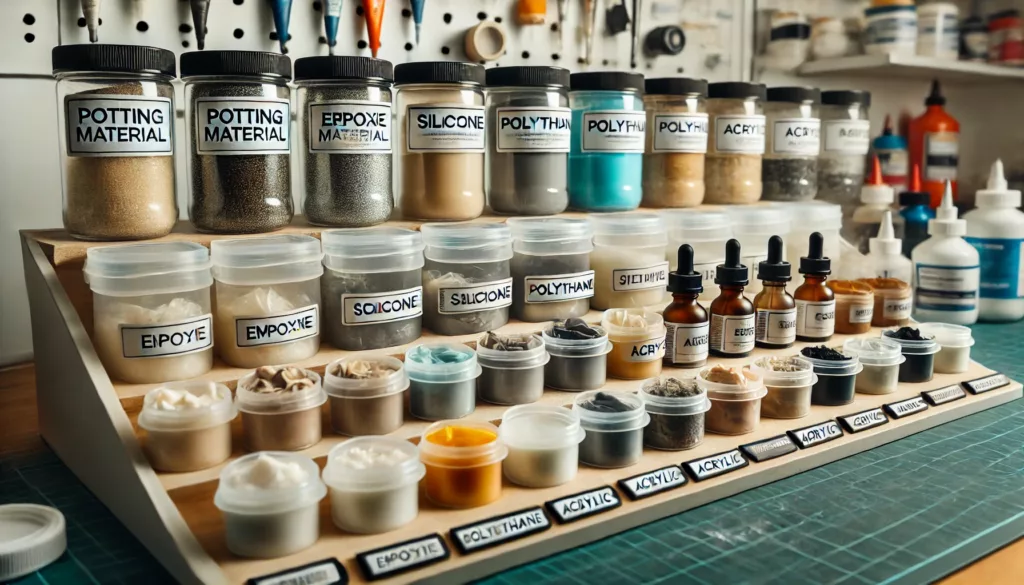
1. Epoxy Resins
Epoxy is widely used for its strength and durability.
- Advantages: High resistance to chemicals, water, and heat. Excellent mechanical protection.
- Disadvantages: Can be brittle, making it unsuitable for flexible PCBs.
2. Polyurethane (PU)
Polyurethane is a versatile option known for its flexibility.
- Advantages: Superior elasticity, ideal for applications requiring vibration resistance. UV stable for outdoor use.
- Disadvantages: Moderate chemical and heat resistance compared to epoxy.
3. Silicone Compounds
Silicone is ideal for high-temperature and sensitive applications.
- Advantages: Exceptional thermal stability, flexibility, and electrical insulation. Suitable for harsh environments.
- Disadvantages: Higher cost and longer curing time.
4. Acrylic Compounds
Acrylic materials are fast-curing and easy to use.
- Advantages: Excellent moisture resistance and electrical insulation.
- Disadvantages: Lower mechanical strength and temperature resistance.
Factors to Consider When Choosing Potting Material
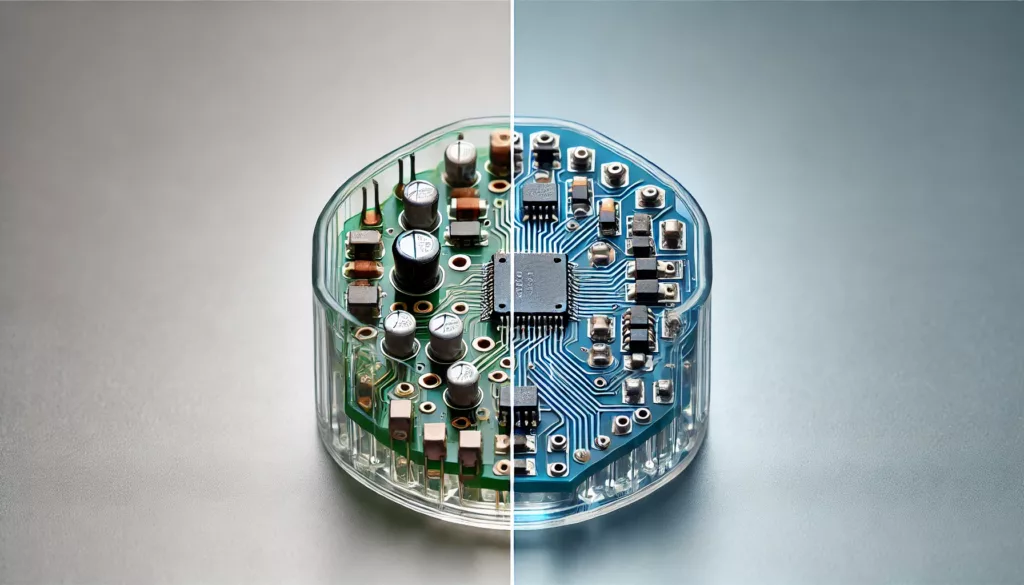
1. Thermal Requirements
Evaluate the operating temperature range of your application. Silicone and epoxy excel in high-temperature environments, while polyurethane is better suited for moderate conditions.
2. Chemical Resistance
Choose materials with the necessary resistance to chemicals and corrosive agents. Epoxy resins perform well in chemically harsh environments.
3. Electrical Properties
For circuits with high voltage or dense layouts, prioritize potting materials with superior dielectric strength and insulation properties.
4. Flexibility and Vibration Resistance
Devices exposed to constant motion or vibrations, such as automotive or aerospace applications, benefit from flexible compounds like polyurethane or silicone.
5. Environmental Exposure
Consider factors like moisture, UV exposure, and outdoor conditions. Silicone and polyurethane are ideal for weather-resistant applications.
Applications of Potting Materials in PCBs
- Consumer Electronics: Enhances durability in smartphones, laptops, and wearables.
- Automotive Industry: Protects ECUs (electronic control units) and sensors from heat and vibrations.
- Aerospace and Defense: Ensures reliability under extreme temperatures and pressure.
- Medical Devices: Maintains precision and safety in critical healthcare equipment.
How to Apply Potting Material to PCBs?

1. Surface Preparation
Clean the PCB thoroughly to remove dust, grease, or moisture. A clean surface ensures better adhesion and protection.
2. Select the Potting Method
Choose between manual pouring or automated dispensing, depending on the scale of your production.
3. Apply Uniformly
Ensure the potting material flows evenly, covering all components and filling gaps.
4. Curing Process
Allow the material to cure as per the manufacturer’s instructions. This can range from a few hours to several days, depending on the type.
Benefits of Choosing the Right Potting Material
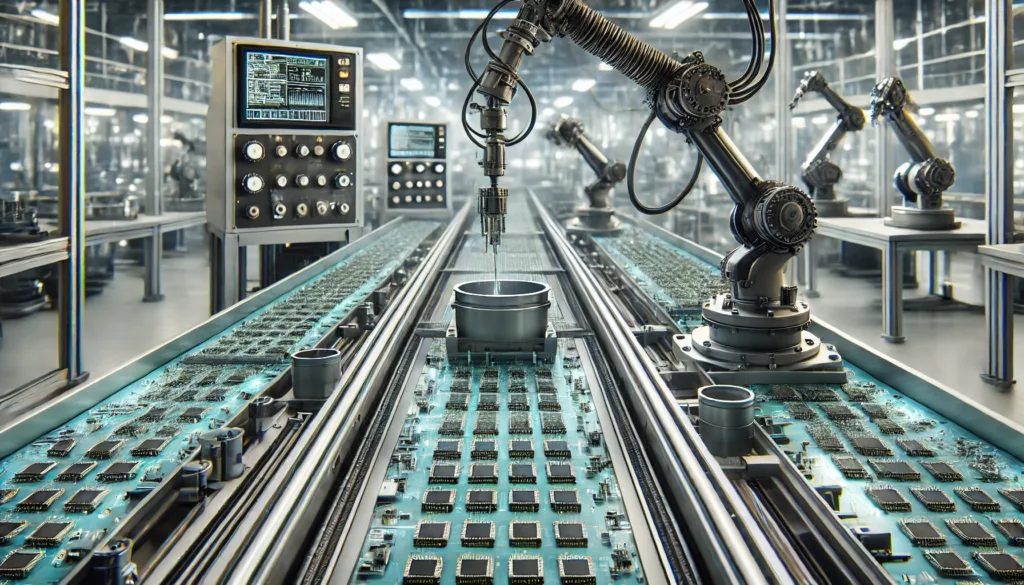
- Enhanced Longevity: Protects electronics from wear and tear.
- Cost Efficiency: Reduces maintenance and replacement costs.
- Improved Safety: Minimizes risks of electrical malfunctions.
- Custom Solutions: Tailored potting materials can meet unique design challenges.
FAQs
What is the purpose of potting a PCB?
Potting protects PCBs from environmental damage, mechanical stress, and electrical interference, enhancing the device’s reliability.
How do I select the right potting material?
Consider factors like operating temperature, chemical exposure, flexibility needs, and electrical insulation requirements.
Can potting materials be removed from PCBs?
Yes, but the process is challenging and may damage components. Silicone is easier to remove compared to epoxy.
What is the difference between potting and conformal coating?
Potting fully encapsulates the PCB for maximum protection, while conformal coating is a thin layer applied to specific areas.
Are all potting materials waterproof?
Most potting materials provide water resistance, but some (e.g., silicone) are better suited for extreme moisture conditions.
How long does potting material take to cure?
Curing times vary by material, ranging from a few hours (acrylic) to several days (silicone).
Conclusion
Finding the right potting material for PCBs is essential for safeguarding electronic components against environmental, thermal, and mechanical stresses. By understanding the types of materials available and evaluating your specific needs, you can ensure reliable performance and longevity for your devices. Whether for consumer electronics, automotive, or industrial applications, the right choice can make all the difference.










